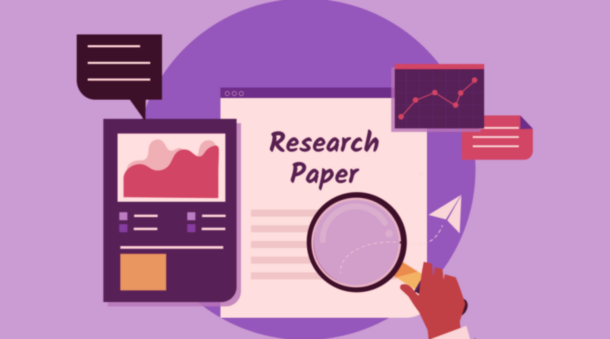چرا مقاله من چاپ نمی شود

رعایت نکردن دستور زبان انگلیسی
عدم تطابق موضوع مقاله با اهداف مجله
نوآورانه نبودن موضوع مقاله
سطح مجله هدف
کمبود آزمایش ها
غرض ورزی با پژوهشگران ایرانی
هر چقدر برای شما مهم است که مقاله شما چاپ شود ولی به هیچ وجه در دام مجلات ESCI نیافتید
Thesis Subject Discovery Package Specification (Updated)
✅ Core Functionality: "Thesis Subject Discovery"
Input:
- User uploads an inspiring thesis or academic resource (PDF, text, or URL).
- User specifies their academic level (Master’s or PhD) and optionally their discipline or keywords of interest.
- Optional: User provides preferences (e.g., theoretical, empirical, applied, interdisciplinary) and timeframe constraints.
Core Process:
- Document Analysis: AI (e.g., Grok) extracts key themes, methodologies, contributions, and the “future works” section (if present) from the uploaded thesis to identify potential research gaps and directions.
- Trend Integration:
- Primary: Query Google Scholar API for recent publications (last 1–3 years) to identify emerging trends, high-citation papers, and gaps in the field related to the thesis’s themes and “future works.”
- Complementary: Use Crossref API to fetch metadata (e.g., journal names, publication dates) for papers identified by Google Scholar or cited in the thesis, ensuring accuracy and enriching journal data.
- Journal Database: Analyze Scopus/DOAJ journal metrics (e.g., CiteScore, publication volume) to validate trends and prioritize high-impact, relevant publication venues.
- Gap Validation: Check if identified gaps (from “future works” or AI analysis) remain unfilled by querying Google Scholar and Crossref for recent papers matching gap-related keywords, using journal database metrics to assess publication activity.
- Topic Generation: AI generates 3–5 novel thesis topics that are:
- Highly correlated to the thesis’s themes and “future works.”
- Aligned with current academic and societal trends (via Google Scholar and journal database).
- Feasible for solo work within a Master’s (1–2 years) or PhD (3–5 years) timeframe.
- Prioritized for novelty (unfilled gaps) and impact, avoiding over-researched areas.
Output: A comprehensive, visually appealing, and branded package delivered as a downloadable PDF report, reflecting your brand’s unique voice and style.
🌟 Enriched Package Components
1. Curated Thesis Topics with "Impact Pathways"
- Description: Each topic includes an Impact Pathway, a concise roadmap showing its potential academic, societal, or industry impact, with:
- Specific research questions.
- Expected contributions (e.g., new framework, policy insights, technological innovation).
- Alignment with global challenges (e.g., UN Sustainable Development Goals).
- Implementation:
- Use Google Scholar to validate topic novelty via citation trends and recent publications.
- Leverage “future works” section to ensure topics build on the thesis’s suggested directions.
- Cross-reference with journal database to confirm topics align with high-impact publication venues.
- Why It’s Special: Provides a visionary, purpose-driven perspective, making topics feel inspiring and actionable.
2. Personalized Feasibility Assessment
- Description: Each topic is evaluated for feasibility based on the user’s academic level, estimated resources (e.g., data access, software, expertise), and timeframe, including:
- Required skills or tools (e.g., Python, survey design).
- Potential challenges and mitigation strategies.
- Estimated timeline breakdown (literature review, data collection, writing).
- Implementation:
- Use rule-based logic to map topic complexity to Master’s/PhD constraints.
- Consult journal database for publication timelines (e.g., fast-publishing DOAJ journals for Master’s students).
- Why It’s Special: Acts as a “thesis coach,” boosting student confidence in solo research.
3. Research Gap Visualization
- Description: A visual “Gap Map” (e.g., bubble chart) plotting each topic’s position relative to existing research, based on:
- Novelty (x-axis: low publication activity, via Google Scholar/Crossref).
- Research activity (y-axis: volume of recent publications).
- Impact potential (bubble size: citation trends or journal metrics).
- Implementation:
- Query Google Scholar for publication counts and citations.
- Use Crossref to confirm publication dates and journal names.
- Leverage journal database to weight impact (e.g., high CiteScore journals).
- Generate visualization with Python (matplotlib) or JavaScript (D3.js).
- Why It’s Special: Branded visual tool helps students intuitively grasp their topic’s novelty and relevance.
4. Thesis Starter Kit with Actionable Resources
- Description: Each topic includes a curated kit to kickstart research:
- Key Papers: 3–5 recent, high-impact papers (sourced via Google Scholar, validated by Crossref metadata) with AI-generated summaries and relevance explanations.
- Search Strings: Optimized Boolean search strings for literature reviews (e.g., for Google Scholar, PubMed).
- Methodology Suggestions: Practical advice on methods (e.g., computational modeling, qualitative analysis) tailored to the topic and user’s level.
- Implementation:
- Use Google Scholar for paper retrieval and keyword extraction.
- Cross-check papers with Crossref for accurate journal names and dates.
- Filter papers using journal database to prioritize high-impact (Scopus) or accessible (DOAJ) sources.
- Why It’s Special: Saves weeks of groundwork, positioning your service as a research accelerator.
5. Trend Spotlight with Narrative Insights
- Description: A narrative section explaining why each topic is trending, written in your brand’s engaging style, including:
- Context from recent breakthroughs or societal shifts (via Google Scholar trends).
- Insights from high-impact journals (via journal database metrics).
- Predictions on topic evolution in 3–5 years.
- Implementation:
- Query Google Scholar for trending papers and keywords.
- Use journal database to identify journals with rising metrics (e.g., CiteScore) in the field.
- Post-process AI output to infuse your brand’s tone (e.g., inspiring, forward-thinking).
- Why It’s Special: Adds thought leadership and a human touch, distinguishing the package from generic AI outputs.
6. Interactive Topic Explorer (Optional Web Feature)
- Description: A web tool on your website where users can:
- Filter topics by novelty, feasibility, or impact.
- View related keywords, papers, or journals in a clickable network.
- Export favorites to the PDF report.
- Implementation: Build a React app with Tailwind CSS, using Google Scholar data for dynamic content and journal database for publication insights.
- Why It’s Special: Tech-forward feature enhances user engagement and reinforces your brand’s innovation.
7. Your Signature: Branded Thesis Success Blueprint
- Description: A branded section tying the package together with your philosophy, including:
- A motivational message (e.g., “Craft a Thesis That Shapes the Future”).
- A checklist for next steps (e.g., “Pitching Your Topic to Your Advisor”).
- Your logo, color scheme, and a personalized PDF cover page.
- Implementation: Use a LaTeX template for a professional, branded PDF report.
- Why It’s Special: Embeds your brand’s identity, making the service feel bespoke.
🛠 Technical Implementation Notes
Database Integration:
- Google Scholar API: Primary source for papers, citations, and trends. Query recent publications (e.g., 2022–2025) to identify gaps and validate novelty.
- Crossref API: Complementary filter to fetch metadata (journal names, dates) for Google Scholar papers or thesis citations, ensuring accuracy and supporting journal recommendations.
- Scopus/DOAJ Journal Database: Assess journal quality (e.g., CiteScore, publication volume) for trend validation and publication recommendations. Filter papers to prioritize high-impact or accessible sources.
- Gap Validation: Query Google Scholar and Crossref for papers matching gap keywords (post-thesis date). Use journal database to assess publication activity (e.g., high volume = filled gap).
AI Pipeline:
- Extract themes and “future works” from the thesis using NLP (e.g., search for “Future Work” headings).
- Generate topics with AI, prioritizing unfilled gaps and trends.
- Post-process outputs with Python scripts to:
- Filter generic or over-researched topics.
- Score novelty and feasibility using heuristics.
- Infuse your brand’s tone.
PDF Report Generation:
- Use LaTeX for a branded, professional report. Updated template excludes funding and emphasizes gap visualization and starter kit.
\documentclass[a4paper,12pt]{article} \usepackage{geometry} \usepackage{titling} \usepackage{graphicx} \usepackage{hyperref} \usepackage{xcolor} \usepackage{tocloft} \usepackage{enumitem} \usepackage{amsmath} \usepackage{tikz} \usetikzlibrary{positioning} \geometry{margin=1in} \definecolor{brandcolor}{RGB}{0, 102, 204} % Your brand color \setlength{\parindent}{0pt} \setlength{\parskip}{1em}
% Title page
\pretitle{\begin{center}\Huge\bfseries\color{brandcolor}}
\posttitle{\par\end{center}\vspace{1em}}
\title{Thesis Subject Discovery Package}
\author{Your Brand Name}
\date{\today}
\begin{document}
\maketitle
\begin{center}
\includegraphics[width=0.3\textwidth]{your_logo.png} % Replace with your logo
\vspace{1em}
\Large Prepared for: Your Name
\end{center}
\tableofcontents
\newpage
\section{Welcome to Your Thesis Journey}
Your journey to a groundbreaking thesis starts here. Our mission is to empower you with novel, impactful, and feasible research ideas tailored to your aspirations.
\section{Suggested Thesis Topics}
% Placeholder for topics
\subsection{Topic 1: Your Topic Title}
\textbf{Impact Pathway}: Description of the topic's potential contributions. \
\textbf{Feasibility}: Suitable for Master’s/PhD, estimated timeline, and resources. \
\textbf{Research Gap}: Why this topic remains unfilled, based on recent literature.
\section{Research Gap Visualization}
\begin{center}
\begin{tikzpicture}
\node[circle, draw, fill=brandcolor!20] at (0,0) {Topic 1};
% Add more nodes for visualization
\end{tikzpicture}
\end{center}
\section{Thesis Starter Kit}
\begin{itemize}
\item \textbf{Key Paper}: Title, author, summary (via Google Scholar, validated by Crossref).
\item \textbf{Search String}: Optimized query for literature review.
\item \textbf{Methodology}: Suggested approach.
\end{itemize}
\section{Trend Spotlight}
% Narrative section with trending insights
This topic is trending due to recent publications in high-impact journals...
\section{Your Thesis Success Blueprint}
% Branded checklist and motivational message
Follow these steps to turn your topic into a thesis masterpiece...
\end{document}
